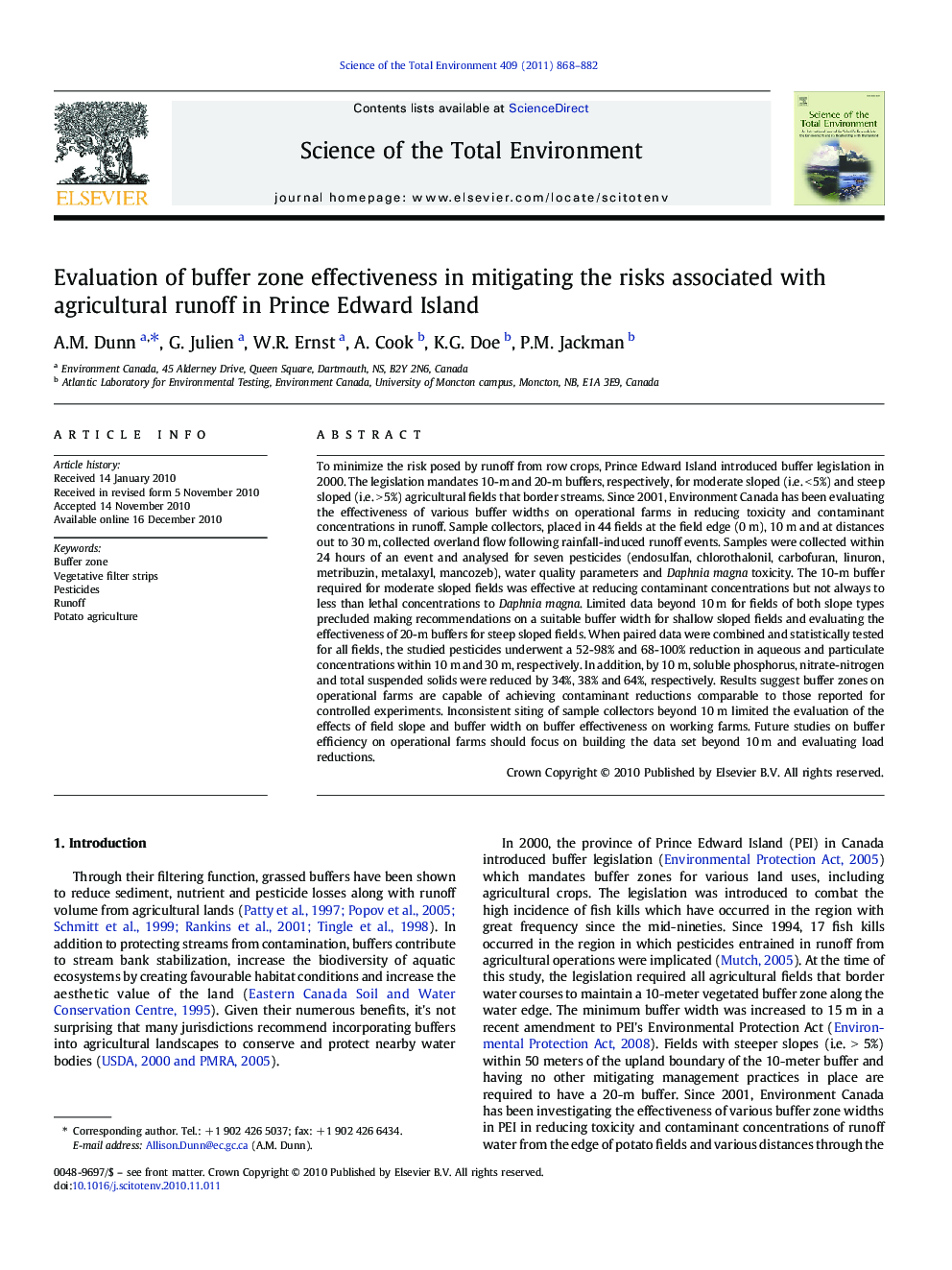| کد مقاله | کد نشریه | سال انتشار | مقاله انگلیسی | نسخه تمام متن |
|---|---|---|---|---|
| 4430406 | 1619857 | 2011 | 15 صفحه PDF | دانلود رایگان |

To minimize the risk posed by runoff from row crops, Prince Edward Island introduced buffer legislation in 2000. The legislation mandates 10-m and 20-m buffers, respectively, for moderate sloped (i.e. < 5%) and steep sloped (i.e. > 5%) agricultural fields that border streams. Since 2001, Environment Canada has been evaluating the effectiveness of various buffer widths on operational farms in reducing toxicity and contaminant concentrations in runoff. Sample collectors, placed in 44 fields at the field edge (0 m), 10 m and at distances out to 30 m, collected overland flow following rainfall-induced runoff events. Samples were collected within 24 hours of an event and analysed for seven pesticides (endosulfan, chlorothalonil, carbofuran, linuron, metribuzin, metalaxyl, mancozeb), water quality parameters and Daphnia magna toxicity. The 10-m buffer required for moderate sloped fields was effective at reducing contaminant concentrations but not always to less than lethal concentrations to Daphnia magna. Limited data beyond 10 m for fields of both slope types precluded making recommendations on a suitable buffer width for shallow sloped fields and evaluating the effectiveness of 20-m buffers for steep sloped fields. When paired data were combined and statistically tested for all fields, the studied pesticides underwent a 52-98% and 68-100% reduction in aqueous and particulate concentrations within 10 m and 30 m, respectively. In addition, by 10 m, soluble phosphorus, nitrate-nitrogen and total suspended solids were reduced by 34%, 38% and 64%, respectively. Results suggest buffer zones on operational farms are capable of achieving contaminant reductions comparable to those reported for controlled experiments. Inconsistent siting of sample collectors beyond 10 m limited the evaluation of the effects of field slope and buffer width on buffer effectiveness on working farms. Future studies on buffer efficiency on operational farms should focus on building the data set beyond 10 m and evaluating load reductions.
Research Highlights
► Buffers on working farms achieve reductions comparable to controlled experiments.
► 10-m buffers reduced pesticide concentrations by at least 52%.
► 30-m buffers reduced pesticide concentrations by at least 78%.
► Soluble phosphorus and nitrate-nitrogen underwent at least a 34% reduction by 10 m.
► Sediment was reduced by 64% and 86%, respectively, by 10 and 30 m.
Journal: Science of The Total Environment - Volume 409, Issue 5, 1 February 2011, Pages 868–882